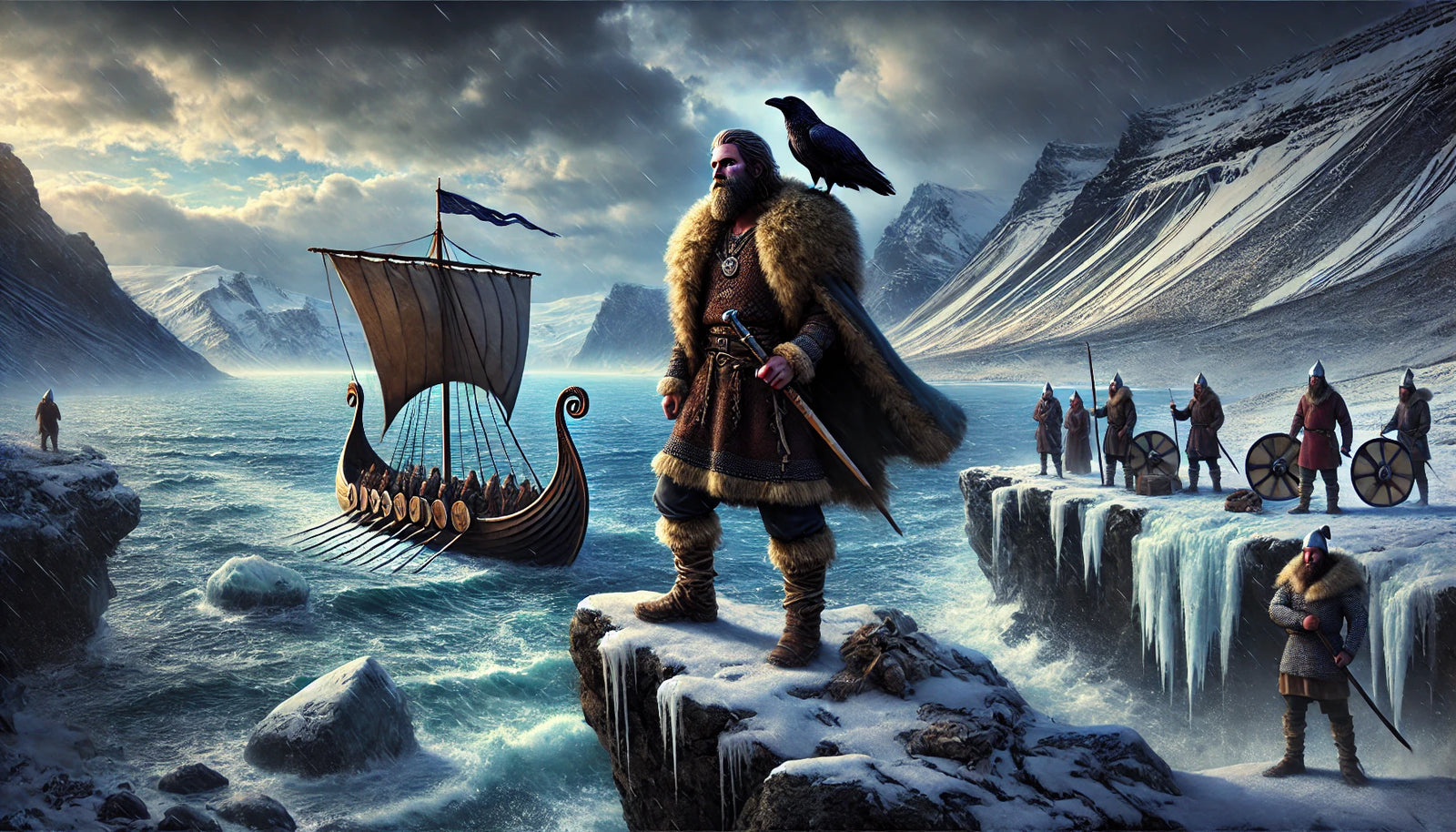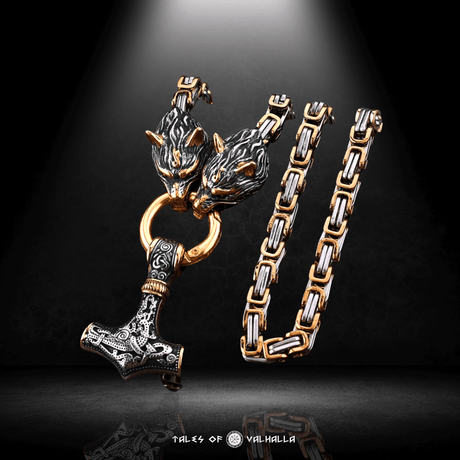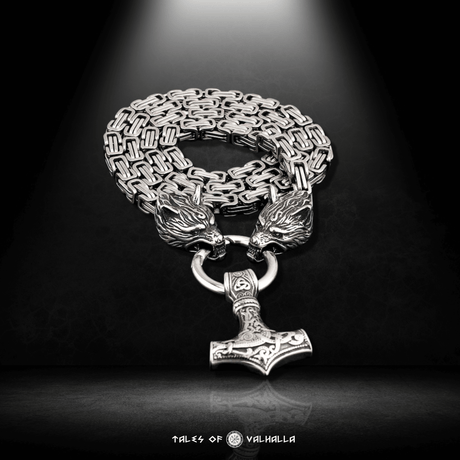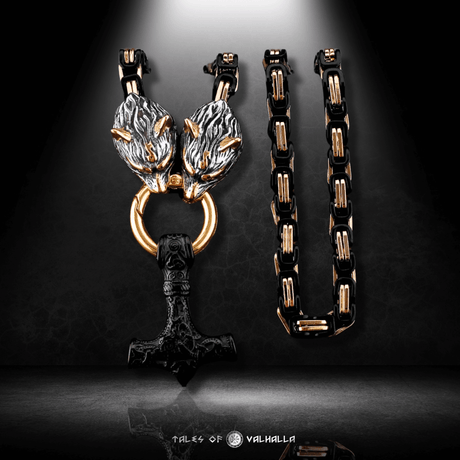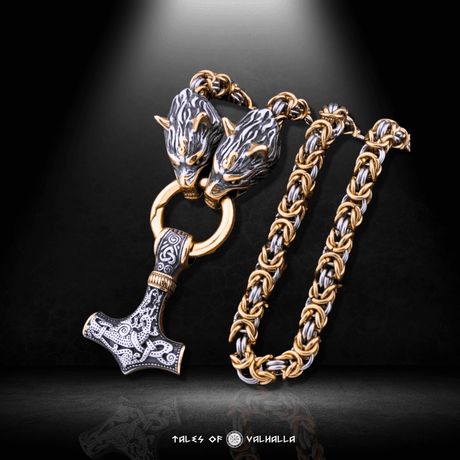Imagine a Viking standing on the prow of his ship, the wind howling through the rigging as waves crash against the sturdy wooden hull. His name is Flóki Vilgerðarson, better known as Hrafna Floki, the man who would forever be linked with the discovery of Iceland. With three ravens perched beside him, Floki embodies the fearless spirit of Viking exploration, driven by a desire to find new lands, chart uncharted territories, and forge a legacy that would endure for centuries.
Born in the 9th century, Hrafna Floki embarked on a daring journey to discover a land rumored to lie far to the northwest. Guided by ravens, Floki's voyage into the unknown would forever change Viking history and the course of Norse exploration. This is the story of Hrafna Floki, a man whose legendary journey opened up a new world to the Vikings and whose name remains etched in history as the first Norseman to deliberately sail to Iceland.
Who is Floki? The Man Behind the Raven Legend
Who is Floki? Flóki Vilgerðarson was a 9th-century Viking adventurer and one of the most iconic figures in Norse history. His epithet, "Hrafna," means "raven," referencing his famed use of ravens to navigate the dangerous North Atlantic seas. In many ways, Floki embodied the quintessential Viking traits of courage, ambition, and a thirst for discovery.
Floki's voyage was not just a quest for new land but also a demonstration of the Viking Age’s spirit of exploration. During this period, the Norse people were known for pushing the boundaries of the known world. Vikings sailed from Scandinavia, discovering new territories, trading, and establishing settlements across Europe, Russia, Greenland, and even North America. However, Floki’s journey was significant because it was intentional—he sought out Iceland as a place for Viking settlement, and he named it.
The medieval Icelandic sagas, particularly the Landnámabók (Book of Settlements), chronicle his life and achievements. Floki set sail with a clear goal in mind: to find and settle this mysterious land that lay beyond the reach of the known world. While his first experience with Iceland was difficult and harsh, his discovery paved the way for future Viking settlers, who would transform the island into a thriving Norse society.
Floki's Epic Voyage: Where Does Floki Sail To?
To truly appreciate Floki's legacy, we must delve into the specifics of his remarkable journey. Where does Floki sail to? His destination was the remote and wild land that would eventually be known as Iceland. This was no accidental discovery, as earlier Viking explorers like Naddodd and Garðar Svavarsson had stumbled upon the land while searching for new trading routes. However, Floki’s mission was different—he set out with the deliberate intention of discovering and settling this territory.

Floki's Epic Voyage: Where Does Floki Sail To?
Floki's journey began in Norway, where he had heard of a fertile land in the northwest, rumored to be vast, untouched, and perfect for settlement. He set sail with a crew of trusted men and three ravens, a traditional method of Viking navigation believed to involve divine guidance. These ravens were critical to his success, and their role in his voyage would cement Floki’s place in Viking lore.
Floki's route took him first to the Faroe Islands, where he resupplied before venturing further west into the unknown. Upon setting sail again, he released the first raven, which flew back toward the Faroe Islands. A second raven was set free and flew in circles, unsure of the direction. But the third raven—the bird that would guide Floki to his destiny—flew westward and did not return. This final raven confirmed what Floki had hoped for: land was nearby.
It was through the guidance of this third raven that Floki eventually reached the shores of Iceland, making him the first Viking to deliberately sail to the island with the intention of exploring and settling it.
What Does the Name Floki Mean? A Look at Norse Symbolism
In Norse culture, names carry great significance, often reflecting the traits, skills, or actions of the person who bears them. What does the name Floki mean? In Old Norse, the name "Flóki" is derived from words that suggest movement or flow, which is fitting for an adventurer who traversed the seas. His nickname, "Hrafna," meaning "raven," is where his legend truly takes flight.
The raven is a powerful symbol in Viking mythology and is closely associated with the god Odin, the Allfather and god of war, wisdom, and death. Odin was accompanied by two ravens, Huginn (thought) and Muninn (memory), who flew across the world each day, bringing him information about the goings-on in the realms of gods and men. Ravens were viewed as messengers of the gods, creatures imbued with special knowledge and guidance.
For Hrafna Floki, his use of ravens was not just practical but deeply symbolic. He released the birds to guide him toward new land, trusting in their instinct and divine guidance. In Viking society, to be connected with the ravens, and by extension Odin, was to align oneself with wisdom and exploration. By following the birds, Floki honored his connection to the divine and invoked the favor of Odin, further cementing his place in Viking history as a legendary explorer.
The Discovery of Iceland: Did Floki Discover Iceland?
The story of Floki discovering Iceland is well-documented in the Landnámabók. While other Norse explorers had sighted Iceland before him, Floki was the first to set out intentionally with the goal of finding and naming the land. His journey was fraught with difficulty, but his discovery would forever shape the history of the Viking Age.
Yes, Floki discovered Iceland, and he was the one to give it its iconic name. Upon arriving, Floki was greeted by a land of stark contrasts. Iceland's volcanic landscape, characterized by glaciers, geysers, hot springs, and rugged terrain, must have seemed both awe-inspiring and daunting to the Viking explorer.
Floki and his crew spent the winter in Iceland, a season that would test their endurance and strength. They set up camp near what is now called Vatnsfjörður in the Westfjords region. However, the winter proved to be harsher than anticipated, and many of their livestock perished due to the cold and lack of proper preparation. It was this experience that led Floki to name the land Ísland or "Iceland"—a name that reflected his impression of the cold, unforgiving environment.
Despite Floki’s difficult first winter, the discovery of Iceland marked a pivotal moment in Norse expansion. The island would eventually become a thriving Viking settlement, with a robust community of farmers, warriors, and traders. Over time, the Icelandic Althing, one of the oldest parliaments in the world, would be established there, cementing Iceland’s role as a center of Norse culture and governance.
Floki's Experiences in Iceland: A Land of Fire and Ice
Floki’s initial experience in Iceland was far from ideal. He had high hopes for the land, believing it to be rich and fertile, but the reality of Iceland's climate and landscape was a harsh one. The winter of Floki’s first year in Iceland was brutal, and his livestock suffered greatly. His disappointment in the land was reflected in the name he gave it: "Iceland."

Floki's Experiences in Iceland: A Land of Fire and Ice
It’s important to note, however, that Floki’s view of Iceland was shaped by his specific experience. Later settlers found the land to be much more hospitable, particularly those who arrived with better knowledge of farming and survival in the harsh climate. These settlers established farms, trading posts, and communities, and by the late 9th century, Iceland had become a thriving Norse settlement.
Floki’s experience in Iceland highlights the challenges faced by the early Viking explorers, who often ventured into unknown lands with little knowledge of what awaited them. While his first attempt to settle in Iceland may have been difficult, Floki’s discovery was nonetheless significant. His voyage opened the door for future settlers, and his name would forever be associated with the land he named.
Where Does Floki Land? Mapping the Discovery of Iceland
When exploring the specifics of where Floki lands, historians believe that he and his crew made landfall in the Westfjords region of Iceland. This remote and rugged part of the island is known for its dramatic fjords, towering cliffs, and stunning natural beauty. However, it is also one of the coldest and most challenging areas of Iceland to settle, which may have contributed to Floki’s difficult first winter.
After spending time exploring the coastline, Floki is said to have ascended a nearby mountain and looked out across the landscape. From this vantage point, he saw the ice-covered fjords that gave Iceland its name. The sagas describe Floki’s deep disappointment at the harshness of the land, but despite this, his journey marked the beginning of Viking settlement in Iceland.
Floki’s decision to name the land Iceland reflects the Viking tendency to use descriptive and symbolic names for places they discovered. In contrast, Greenland, which was discovered later by Erik the Red, was named in a more optimistic fashion to attract settlers, despite its largely inhospitable terrain. Floki’s more pragmatic approach to naming Iceland is indicative of the Vikings’ understanding of the importance of storytelling and branding in their exploration efforts.
Floki’s Later Life: How Does Floki Die in Vikings?
One of the most intriguing aspects of Hrafna Floki's story is how he has been portrayed in popular culture, particularly in the hit television series Vikings. In the show, Floki is depicted as a complex and deeply spiritual character, torn between his devotion to the gods and his loyalty to his fellow Vikings. His portrayal in the show has sparked interest in the historical figure and raised questions about how Floki dies in Vikings.
In the series, Floki’s fate is left somewhat ambiguous. After journeying to Iceland in search of the gods, he enters a cave, where he hopes to find divine inspiration. Instead, he finds only desolation, and the cave collapses around him. The show leaves viewers wondering whether Floki survives or perishes in the cave, adding a layer of mystery to his character.
Historically, however, the exact circumstances of Floki’s death are not well-documented. The sagas do not provide a clear account of his later years, and it is likely that Floki lived out his life quietly after his return to Norway from Iceland. While his initial attempt to settle Iceland was not a success, his legacy as a daring explorer remains intact.
Floki’s Family: Vikings Floki Wife and Children
Though Floki’s adventures often take center stage in the historical accounts, Vikings Floki wife and his family played an important role in his life and his voyages. According to the sagas, Floki was married to a woman named Gró, and together they had several children, including a daughter named Þjóðgerður.
Viking women like Gró were not merely passive companions; they were essential partners in exploration and settlement. Viking women were responsible for managing households, overseeing farms, and often accompanying their husbands on long voyages. In Floki’s case, his wife would have been an integral part of the decision to explore Iceland and attempt to settle the land.
In the television series Vikings, Floki’s wife is portrayed as Helga, a devoted and loyal companion who follows him on his spiritual and physical journeys. While the historical accuracy of the show’s portrayal is debated, it highlights the importance of family and relationships in Viking society.
Floki’s Legacy: A Lasting Impact on Viking Exploration
While Floki’s initial experience in Iceland may not have been a resounding success, his legacy as an explorer is undeniable. Floki discovered Iceland, and his name is forever linked with the land that would become one of the most important Viking settlements. The discovery of Iceland marked the beginning of a new era in Viking expansion, with Iceland serving as a gateway for further exploration and settlement in Greenland and North America.
Floki’s voyage also highlights the importance of Viking navigation techniques. His use of ravens as navigational tools demonstrates the ingenuity and resourcefulness of the Vikings, who were able to traverse vast distances with limited technology. The story of Hrafna Floki serves as a reminder of the adventurous spirit that defined the Viking Age and continues to captivate our imaginations today.
Conclusion
Hrafna Floki stands as one of the most important figures in Viking exploration, not only for his discovery of Iceland but also for his role in shaping the Viking spirit of adventure and discovery. His use of ravens to guide his journey reflects the deep connection between Vikings and their environment, as well as their faith in the gods and the natural world.
Though Floki’s first winter in Iceland was harsh, his discovery paved the way for future generations of Norse settlers, who would transform Iceland into a thriving Viking society. His story, immortalized in the sagas and reimagined in popular culture, continues to inspire curiosity and fascination about the Viking Age.
The tale of Hrafna Floki is a testament to the boldness and resilience of the Vikings, whose desire to explore new lands and push the boundaries of the known world shaped the course of history. Today, Floki’s legacy lives on, not only in Iceland but in the enduring myth of the Viking explorer who followed the ravens to the edge of the world.
FAQ
1. Who is Hrafna Floki?
Hrafna Floki Vilgerðarson was a 9th-century Viking explorer best known for being the first Norseman to deliberately sail to Iceland. His nickname, "Hrafna," meaning "raven," comes from his use of ravens to help navigate the seas during his voyage. Floki's journey was pivotal in the Viking Age of exploration, leading to the eventual settlement of Iceland.
2. How did Floki discover Iceland?
Floki set sail from Norway with a crew and three ravens, which he used as navigation aids. The third raven he released did not return, indicating that land was nearby. Following the raven’s path, Floki eventually landed on the shores of what is now Iceland. He is credited with being the first Viking to intentionally seek out and discover Iceland, although other Norse explorers had previously sighted it.
3. What does the name "Floki" mean?
In Old Norse, "Flóki" can be interpreted as "adventurous" or "outgoing," which is fitting for a Viking explorer. His epithet "Hrafna," meaning "raven," reflects his use of ravens for navigation, a symbol closely associated with the Norse god Odin, who had two ravens as his messengers.
4. How does Floki die in the Vikings TV show?
In the TV series Vikings, Floki’s fate is left ambiguous. He embarks on a spiritual quest in Iceland, seeking the gods, and enters a cave where he believes he will find divine answers. However, the cave collapses, and it is unclear whether he survives. Historically, there is no clear record of how Floki died, and his later life remains largely a mystery.
5. Did Floki's wife accompany him on his journey to Iceland?
In the sagas, Floki's wife, Gró, played an important role in his life, though she is less prominently featured in the accounts than Floki himself. Viking women often accompanied their husbands on explorations and were essential in managing households during these voyages. In the Vikings TV series, Floki’s wife is portrayed as Helga, a loyal companion who follows him on many of his journeys.
6. What is Hrafna Floki’s legacy?
Hrafna Floki’s legacy is that of a bold Viking explorer who is credited with discovering and naming Iceland. While his initial attempt to settle the island was difficult, his journey opened the door for future Viking settlers. Floki's use of ravens in navigation has become a legendary part of his story, symbolizing both his ingenuity and his deep connection to Norse mythology.

